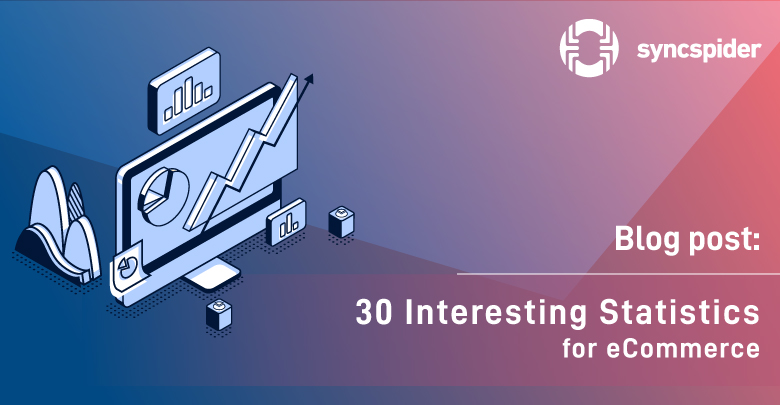Okay, those who follow our LinkedIn account know how much we love statistics. And that’s what we want to present to you today. Statistics for eCommerce! An article that will encompass everything that we think is useful for your eCommerce business and related to the statistical data.
Why?
Because we firmly believe that the data can show you the way where your eCommerce business should go. It’s like the road signs, and all you need to do is learn to understand them.
So, let’s have fun!
Target market
Before even starting your eCommerce business, it’s always helpful to see how big is your target market.
And it is always preferable to have a detailed image of your perfect buyer.
Now, this doesn’t mean you need to determine what hair color this prospector would have (except if you’re selling a hair dye), but it is necessary to decide on what age group your product is aiming at; their social status, finances, and location.
Statistics show us what people mostly search for, what they prefer to buy online, and how much they spend on average.
We have some interesting stats on this topic that might help you determine which product you’ll be selling, which market you will choose, or why the sales are not as expected.
If you’re targeting the USA, European, or the UK market, you should know that:
The USA market
- The largest group of digital buyers in the United States are Millenials aged 25 to 34 years, and they make up 20.2% (Statista, 2020)
- The second-largest group is those between 35 and 45 years, and they make up 17.2% of the digital buyers in the USA. (Statista, 2020)
- 74.3% of the American population purchased goods online. (Statista, 2021)
- In 2020, approximately 79 million buyers in the United States bought something through social networks. (Statista, 2020)
- 86% of the top 500 online shops in the US have a profile on Instagram. (Statista, 2021)
- 93.7% of the top 500 online shops in the US have a profile on Twitter. (Statista, 2021)
- The USA was the country with the most eBay app downloads in 2020. (Statista, 2020)
- Amazon was the most visited eCommerce website in the USA in 2021, with approximately 2.45 billion monthly visits. (Statista, 2021)
- In 2020, nail polish was the fastest-growing eCommerce cosmetics segment in the United States. (Statista, 2021)
- The biggest reason internet users in the United States shop on Amazon is that it’s fast and with free shipping. (Statista, 2022)
The European market
- The European market makes up 16% of the global eCommerce market, following Asia and Pacific, with half of the retail sales in 2020, and North America with 20%. (Statista, 2020)
- Livestreaming eCommerce platforms awareness in Europe is around 30%. (Statista, 2020)
- In December 2021, the European eCommerce unicorn was a Lithuanian company Vinted, a direct-to-consumer platform. (Statista, 2021)
- In 2020, B2C eCommerce made 5.19% of the gross domestic product in Western European countries. (Statista, 2021)
- In 2021, the eCommerce fashion market in Europe created revenue of almost US $130 billion and took the most significant share in the European eCommerce market. (Statista, 2021)
- The number of people participating in eCommerce in 2021 was almost 502 million. (Statista, 2021)
- In 2021, Germany had around 68.4 million eCommerce users. (Statista, 2021)
- 95.1% of the top 500 online shops in Germany have a profile on Facebook. (Statista, 2021)
- In 2021, Finland had the lowest share of weekly online shoppers in Europe. (Statista, 2022)
- In 2021, the most popular product category among online consumers in Belgium was apparel and footwear products. (Statista, 2021)
The UK market
- It is expected in 2022 that online retail will make up to 32% of the UK retail sales. (Statista, 2022)
- In 2021, the UK platform of the B2B marketplace Amazon Business registered an online reach of roughly 310,000 visits. (Statista, 2022)
- In 2021, the UK reached an estimated 141 billion British pounds in eCommerce retail sales. (Statista, 2022)
- In 2020, eCommerce sales reached 32.5% of all retail sales in the UK. (Statista, 2021)
- In 2020, Amazon.co.uk was the leading UK eCommerce market, followed by Tesco.com and Argos.co.uk in third place. (Statista, 2022)
- In 2019, retail sales via mobile devices were 50.36 billion British pounds. (Statista, 2022)
- In 2021, approximately nine out of ten UK consumers stated they would check online reviews before buying from a particular shop. (Statista, 2021)
- In 2019, the highest conversion rate in the UK was during the Christmas season, 4.4%. (Statista, 2021)
- In 2017, the most common reason for late or non-delivery of online orders in the UK was that the package was not shipped by the retailer, 34%. (Statista, 2022)
- In 2021, the majority of the UK online buyers found inspiration for shopping while searching through Amazon (52%), search engines (37%), and cited retailer sites (29%). (Statista, 2021)
And there you go. We hope you’ll find these statistics helpful for eCommerce and use them right! If you’re interested in trends and predictions for eCommerce in the next five years, you should check our blog post, The Future of eCommerce: 32 Experts Share Their Predictions.








